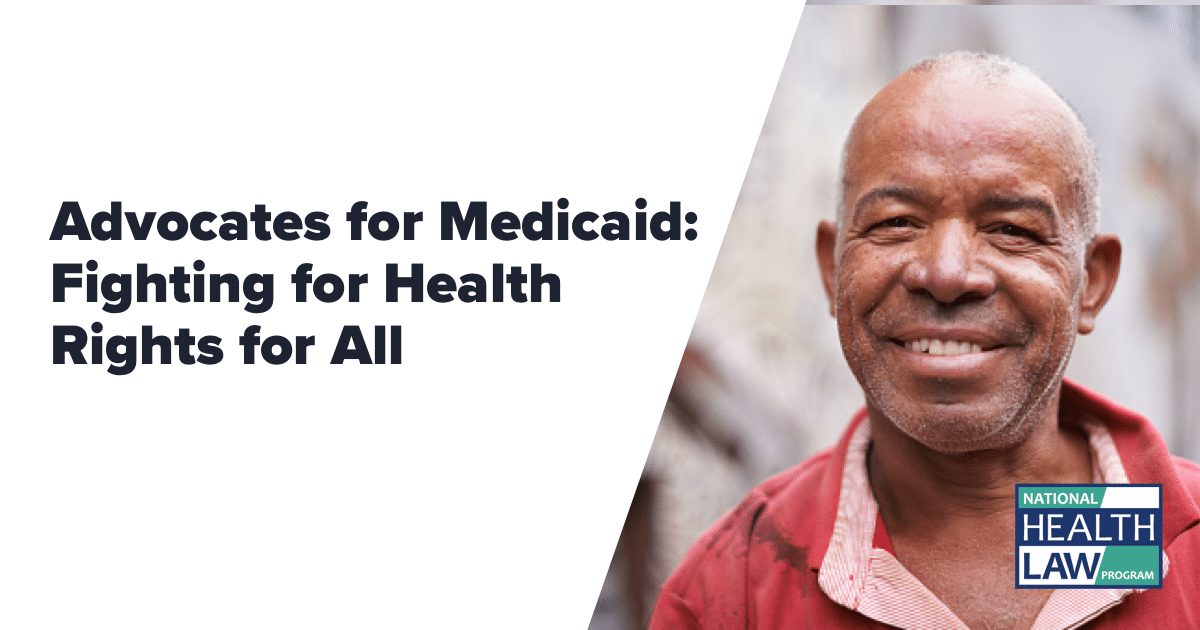A Conversation with Advocates: What’s Working in Illinois During the “Unwinding” – Part II
By: Carrie Chapman, Stephanie Altman, and Nadeen Israel
This blog is part of our Working Better Together series and was recorded by Carrie Chapman, Senior Director of Policy and Advocacy at Legal Council for Health Justice, Stephanie Altman, Director of Healthcare Justice at the Shriver Center on Poverty Law, and Nadeen Israel, Senior Vice President of Policy and Advocacy at AIDS Foundation Chicago. This blog series is intended to provide our Health Law Partnerships and advocacy partners with a platform to highlight successes, challenges, and innovative approaches to furthering health access and health equity in the states where they work.
The “Medicaid Experiences” project referenced in this blog series is a collaborative endeavor of the National Health Law Program and eight state-based legal aid organizations. The purpose is to better understand the direct experience of individuals as enrollees and applicants for Medicaid and advocate for improvements.

To see Part I, click here.
Carrie Chapman: So, hey everybody! Good afternoon; it’s great to see you. I’m Carrie Chapman. I work for a legal aid organization called the Legal Council for Health Justice. I use she/her pronouns, and we’re a small legal aid organization that provides direct services and also does policy and impact work on Medicaid. I’m here with two of my greatest collaborators and Medicaid champions, Stephanie Altman and Nadeen Israel. It’s been very fun to talk about what’s going well. We do celebrate our victories here for sure and appreciate our state Medicaid agency for all the things that they’ve done that are working. But there are definitely some challenges.
So, going in a different order, Nadeen, what are some of the challenges that we’re seeing?
Nadeen Israel: Sure, I would like to highlight a couple of issues. First, when we examine the data, it’s important to consider that we’re looking at about one month’s worth of information, specifically within the context of Illinois. We’re focusing on the call center’s wait times and drop rates. While the current situation isn’t as horrible as it has been in the past, depending on the report you look at, you’ll find wait times ranging from 10 to 14 minutes and a call abandonment rate between 28% and 34%. Although it’s not as dire as it once was, it’s still excessively long for someone to wait, and the high abandonment rate indicates this issue. This is an area we are closely monitoring and maintaining communication with the state to explore potential improvements. As for the opportunity for further discussion, I’ll save that for later.
Carrie Chapman: Yeah, let’s close with opportunities. Stephanie, what is another challenge?
Stephanie Altman: I think another challenge that we have seen is system outages. We have an electronic system for people to manage their benefits and facilitate their redeterminations, which already acts as a barrier because not everyone can access and set up a case online. We have certainly reported many issues over the years, as many people had trouble identity-proofing, which is quite difficult. It has proven particularly difficult for immigrants, people without a strong credit history, adults and children with disabilities, and people experiencing homelessness. Based on the stories we’ve sent to the state, they made a new improvement this year that has helped more people set up an online case by allowing seamless ID proofing through the Secretary of State’s office. This is one good win that we’ve been able to get, But there are still a lot of people who can’t set up cases.
For people who can set up an online case, and that is over two million people in Illinois, it is the best way by far to renew your benefits, other than ex parte, because there is a simple renewal button. Specifically, people do not have to worry about getting their paperwork through the mail. However, during the onset of the public health unwinding in May, the system faced a significant downtime, coinciding with heightened demand and causing strain on users. This issue was exacerbated by the fact that the system was often taken offline during weekends and nights for maintenance, precisely when many clients, working long hours, could address such matters.
The convergence of these factors created a challenging situation, with reports from both clients and navigators consistently indicating repeated system outages. Some individuals even found it impossible to complete their redetermination until the last possible moment. In response to these challenges, the state implemented temporary solutions, such as allowing individuals to complete redetermination via phone calls, albeit with reported issues in the call line. When the federal government permitted states to temporarily pause terminations and extend deadlines, Illinois, influenced by the stories shared, opted to delay terminations until August 1st from the June redetermination dates. Furthermore, recognizing the persisting system problems, the state extended the grace period for one month, stretching into 2024. While the system issues are still being addressed, the state’s responsiveness to shared experiences and its quick actions to mitigate the impact are appreciated.
Carrie Chapman: I find it noteworthy that the situation with notices presents an interesting dynamic. While the state has made efforts to enhance the clarity of critical information on the front page and use simpler language, there are persistent issues with notices related to complex Medicaid programs like Medicaid spend-down and Medicare Savings programs. Feedback from individuals indicates that these notices are often confusing, with inconsistencies between different pages. This is particularly problematic given the inherent complexity of these programs.
Moreover, there are instances of improperly processed cases behind the scenes, adding another layer of concern. However, our primary focus remains on improving the clarity of notices. It is crucial for individuals to understand the content promptly, considering the limited timeframe for action before entering a coverage gap. This is especially pertinent for individuals on spend down, who are typically older adults and people with disabilities requiring regular medical attention.
Another challenge we’ve faced is mailroom delays, particularly in Illinois. Backlogs in the mailroom result in notices displaying a date that is significantly earlier than the postmark on the envelope—sometimes four to six weeks later. This creates a critical issue as the information becomes outdated by the time it reaches the recipient. Unfortunately, we are experiencing these mailroom delays again, which poses a serious problem for affected individuals. We are actively advocating for and addressing this issue, as we have numerous instances where individuals express confusion and frustration due to deadlines that were supposed to be met before the postmarked date. This remains an ongoing area of focus for our advocacy efforts.






